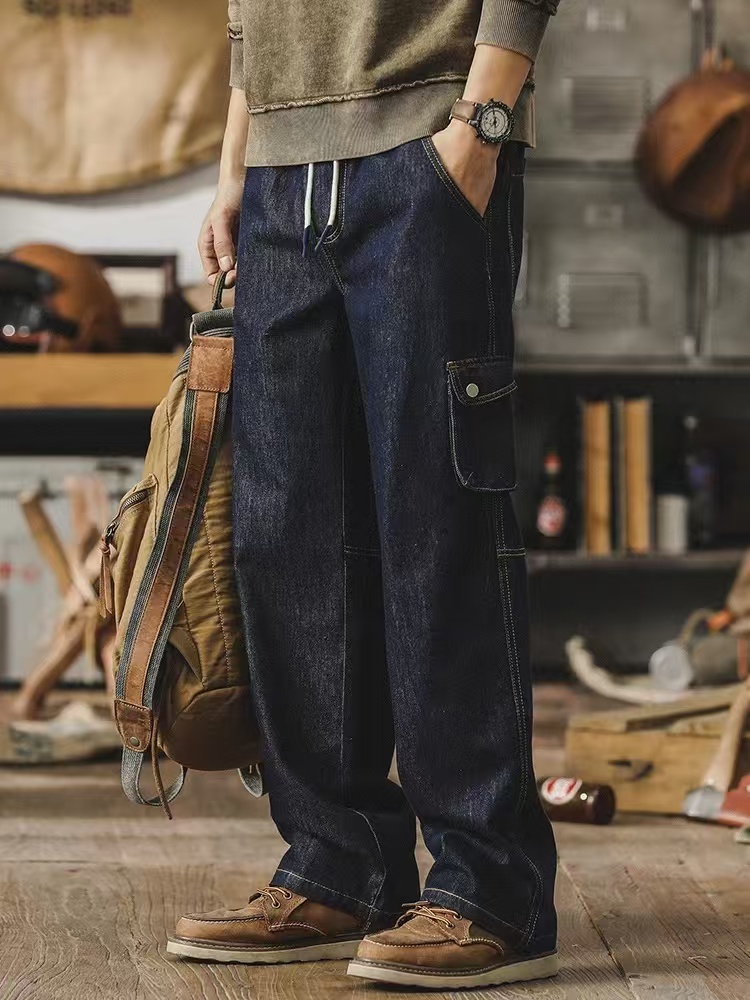Denim Fabric: From Weaving to Finishing

Estimated reading time: ~3 minutes
Introduction to Denim Fabric
Denim exists as a fabric that represents both cultural significance and strength and fashion. The composition of denim fabric remains a mystery to many people. The fundamental structure of denim consists of a heavy cotton twill fabric with its traditional diagonal ribbed pattern. This article provides complete information about denim production and its weaving process while detailing all the steps until finishing.

Selvage Denim Detail
The Art of Weaving Denim
Denim production starts with weaving when two yarn sets called warp and weft are woven together. The warp threads run vertically as indigo-dyed threads whereas weft threads remain undyed as they run horizontally. The textile creates its unique pattern through blue fabric on one side while the other side remains white.
- Selvedge Denim: Selvedge denim stands out as the preferred choice for denim enthusiasts. Traditional shuttle looms produce selvedge denim which achieves self-finished edges that maintain the fabric’s premium quality. The production method of selvedge denim differs from mass-made wide loom (shuttleless loom) products since it provides an individualized artisanal feel.
- Twill Weaves: Denim’s diagonal pattern comes from its twill weave, which can vary as right hand, left hand, or broken twill. The choice of fabric type directly impacts the material characteristics which makes it essential for designers to consider.

LOOM
Fabric Finishing: Perfecting Denim
The fabric finishing stage follows weaving operations to improve denim properties. These fabric processing methods make the material suitable for garment production and domestic upholstery projects.
- Loomstate Denim: Fresh off the loom, this untreated denim is raw and stiff, appealing to purists who enjoy breaking it in over time.
- Sanforization: A pre-shrinking process that stabilizes denim, preventing unwanted shrinkage after washing—ideal for “denim fabric by the yard” purchases.
- Mercerisation: This treatment smooths the fibers, adding luster and strength.
- Singeing: Burning off surface fuzz through singeing produces a polished finish while making the fabric smoother.
The various finishes available serve different purposes such as creating denim jackets and stretch denim fabric for making fitted jeans.
Why Denim Endures
The diverse applications of denim products drive its widespread consumer acceptance because its cotton foundation provides durability and comfort while stretch fabric technologies enhance its suitability. The denim fabric exists in various forms including selvedge and lightweight types which fit into fashion and home décor applications and other uses.

Get Started with Denim Today
The time has come to begin exploring denim. Understanding how denim fabric is made helps both crafters who want quality fabric and designers who work with selvedge weaves to appreciate denim more deeply. You can find premium denim at lydenim.com while Malone@lydenim.com provides personalized guidance to customers. Your next denim masterpiece awaits!
Customization Services by LYDENIM
🎨 Want custom denim fabrics or unique custom denim garment? LYDENIM specializes in tailor-made solutions to meet your design and production needs.
🛍️ Explore & Get Inspired: Browse our fabric selections and discover design ideas on LYDenim.
🌐 Elastic Clothing: Check out our offerings on MyAlibaba. 📩 Contact Us: Reach out at malone@lydenim.com.
Create your denim masterpiece with LYDENIM—your trusted partner for stretch fabric and custom denim solutions.
